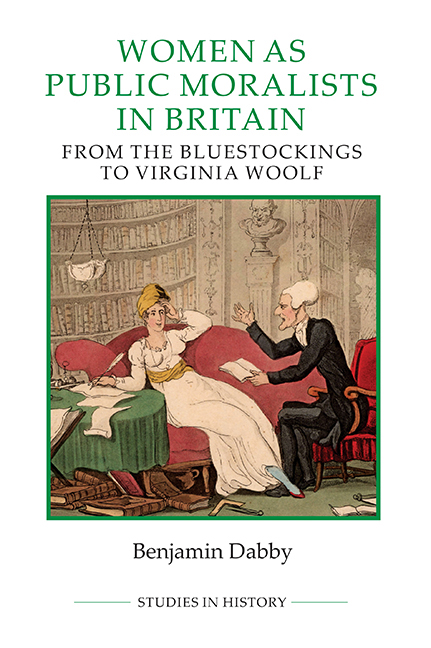Book contents
- Frontmatter
- Dedication
- Contents
- List of illustrations
- Acknowledgements
- Abbreviations
- Introduction
- PART I HISTORY AND THE PRESENT
- PART II LITERATURE, ART AND LIFE
- 4 Anna Jameson, cultural authority and public moralism
- 5 Beautiful and useful arts in Hannah Lawrance's cultural criticism
- 6 Marian Evans's cultural criticism in the context of women's public moralism
- PART III CHANGE AND CONTINUITY FROM THE FIN-DESIÈCLE TO MODERNITY
- The contexts of conclusions
- Bibliography
- Index
4 - Anna Jameson, cultural authority and public moralism
from PART II - LITERATURE, ART AND LIFE
Published online by Cambridge University Press: 25 October 2017
- Frontmatter
- Dedication
- Contents
- List of illustrations
- Acknowledgements
- Abbreviations
- Introduction
- PART I HISTORY AND THE PRESENT
- PART II LITERATURE, ART AND LIFE
- 4 Anna Jameson, cultural authority and public moralism
- 5 Beautiful and useful arts in Hannah Lawrance's cultural criticism
- 6 Marian Evans's cultural criticism in the context of women's public moralism
- PART III CHANGE AND CONTINUITY FROM THE FIN-DESIÈCLE TO MODERNITY
- The contexts of conclusions
- Bibliography
- Index
Summary
The commercial success and positive reception of the Memoirs of celebrated female sovereigns (1831) allowed Anna Jameson to extend her arguments for women's rights to better education and wider employment, and to broaden the remit of her public moralism. In 1832 she published Characteristics of women, moral, poetical, and historical, known in later editions as Shakespeare's heroines. In the Memoirs she had used history to show that public life did not corrupt women any more than it did men. In fact, she had reversed the traditional sexist argument to argue that men were more often ruled by vanity and passion. Now she went further and argued that women were as responsible as men for the moral progress of society. Jameson's career in letters was evidence of this in itself, and in 1834 she began to write on a wider range of cultural and social issues in Visits and sketches at home and abroad. By using the unimpeachable moral authority of the Shakespearean canon to promote her ideal of a society in which men and women fulfilled their potential in public and in private life, she won the cultural authority to expand the remit of her criticism to encompass a broader range of social issues.
The Characteristics of women was a runaway success. Extracts from it appeared that year in the Belle Assemblée and in 1833 it was serialised in Blackwood's Edinburgh Magazine together with a commentary supplied by John Wilson, better known by his penname as ‘Christopher North’. He wrote that Jameson had ‘immortalized her name’ with Characteristics of women, and by 1900 it had appeared in England and America in over thirty editions, and twentiethcentury editions were to follow. Its importance has been obscured to us by the assumption that the authority of history grew in the nineteenth century because it began to distinguish itself more firmly from fiction. Devoney Looser has argued that in the wake of the French Revolution, fiction and history were ever more separated in people's minds, reiterating Linda Orr's argument that ‘history awakes in the nineteenth century surprised and even horrified to see how closely it is coupled with fiction’.
- Type
- Chapter
- Information
- Women as Public Moralists in BritainFrom the Bluestockings to Virginia Woolf, pp. 97 - 127Publisher: Boydell & BrewerPrint publication year: 2017

